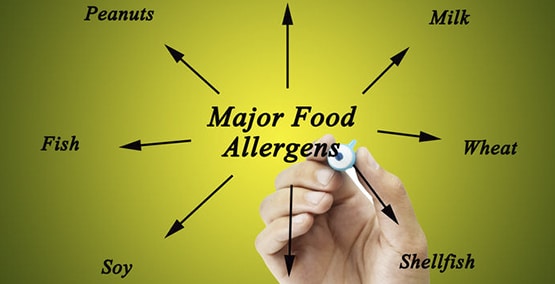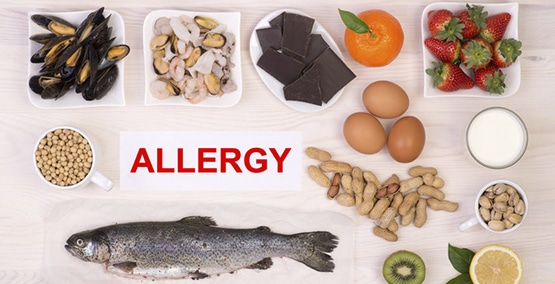
Why do food allergies come so quick
"Classic" food allergy is caused by a response of your immune system to proteins, called allergens. Allergies do not occur with carbohydrates, fats/oils or other substances.
Allergic reactions typically occurs within minutes to hours.

The IgE molecule is an antibody, specifically associated with allergy. It is produced by certain cells and released into the body systems. The IgE coat the surface of a mast cell like quills on the back of a porcupine. The quill tips are then like keys that fit a specific lock because the teeth at the free end bind to the allergens (or foreign proteins). And that binding process acts like a trigger.
A signal inside the mast cell leads to the immediate release of histamine (a chemical which is pre-made and "stocked" in normal resting mast cells). The internal machinery of the mast cells also starts the production of chemicals involved in the allergic reactions such as leukotrienes, prostaglandins and other proteins that can recruit other immune, allergy cells including eosinophils. That is why you can see two waves to an allergic reaction; an early or immediate phase (due to immediate release of pre-synthesized histamine) and a late or delayed phase (due to the time needed to produce and then release the later components). That is why taking an anti-histamine helps in the beginning, but it may not stop the total reaction.
What if it's Not "Classic" Food Allergy
There can be other reactions to food proteins which do not involve the IgE branch of the immune system. Celiac disease is a good example where a small protein creates a reaction that damages the surface of the intestine. And there are numerous food sensitivities that do not have anything to with the proteins (lactose intolerance is one of those).
In humans, these classic allergic reactions do not involve parts of your immune system such as IgG or the neutrophils; so tests which measure IgG levels or neutrophil function are not considered to be valid measures of allergy. And while we can measure eosinophils, we cannot overlook that they also can be increased in non-allergic conditions like inflammatory bowel disease (ulcerative colitis and Crohn's disease) and some viral and parasitic infections as well.
And while this may make it difficult to be sure if your child has a non-allergic reaction, it still can be important to track down the problem, often by carefully looking at the dietary and other factors that may have preceded the reaction.
Dr. Luqman Seidu, adjunct professor at the Morehouse School of Medicine and Director of Allergy for the SouthEast Eosinophilic Disease Center in Atlanta here explains the complex topic of how classic food allergies develop.
Dr. Stan

